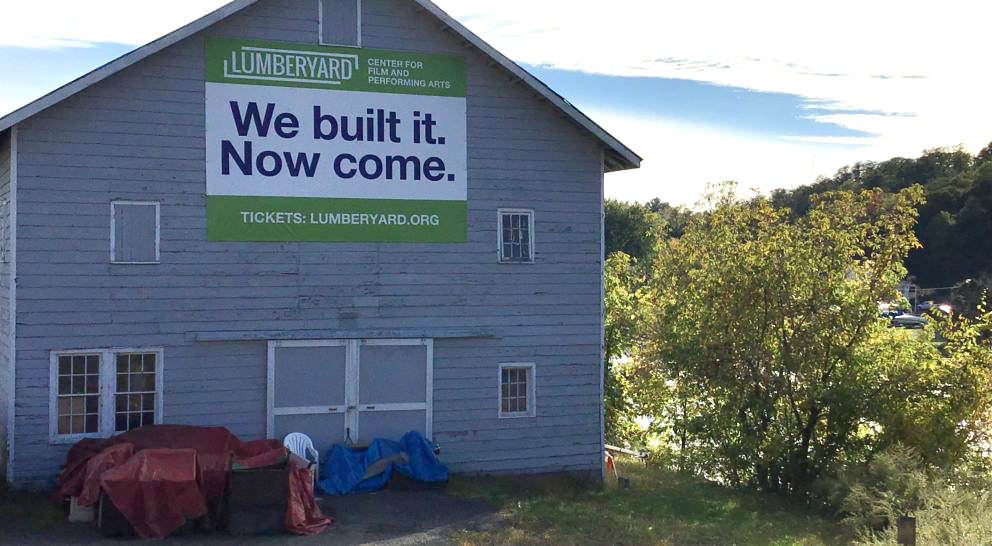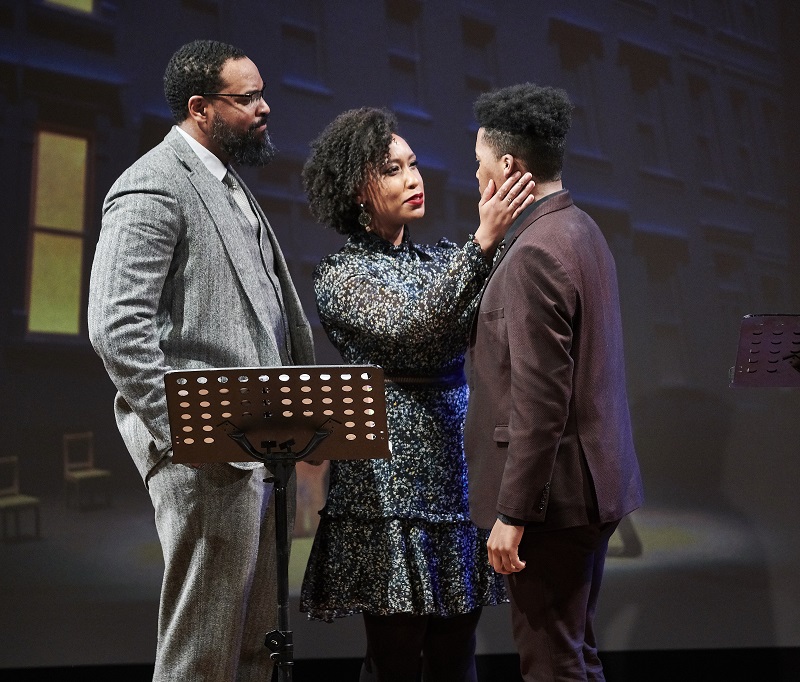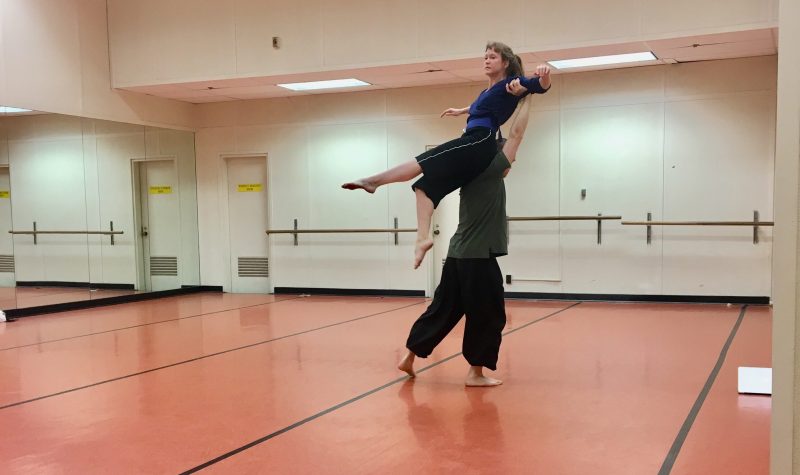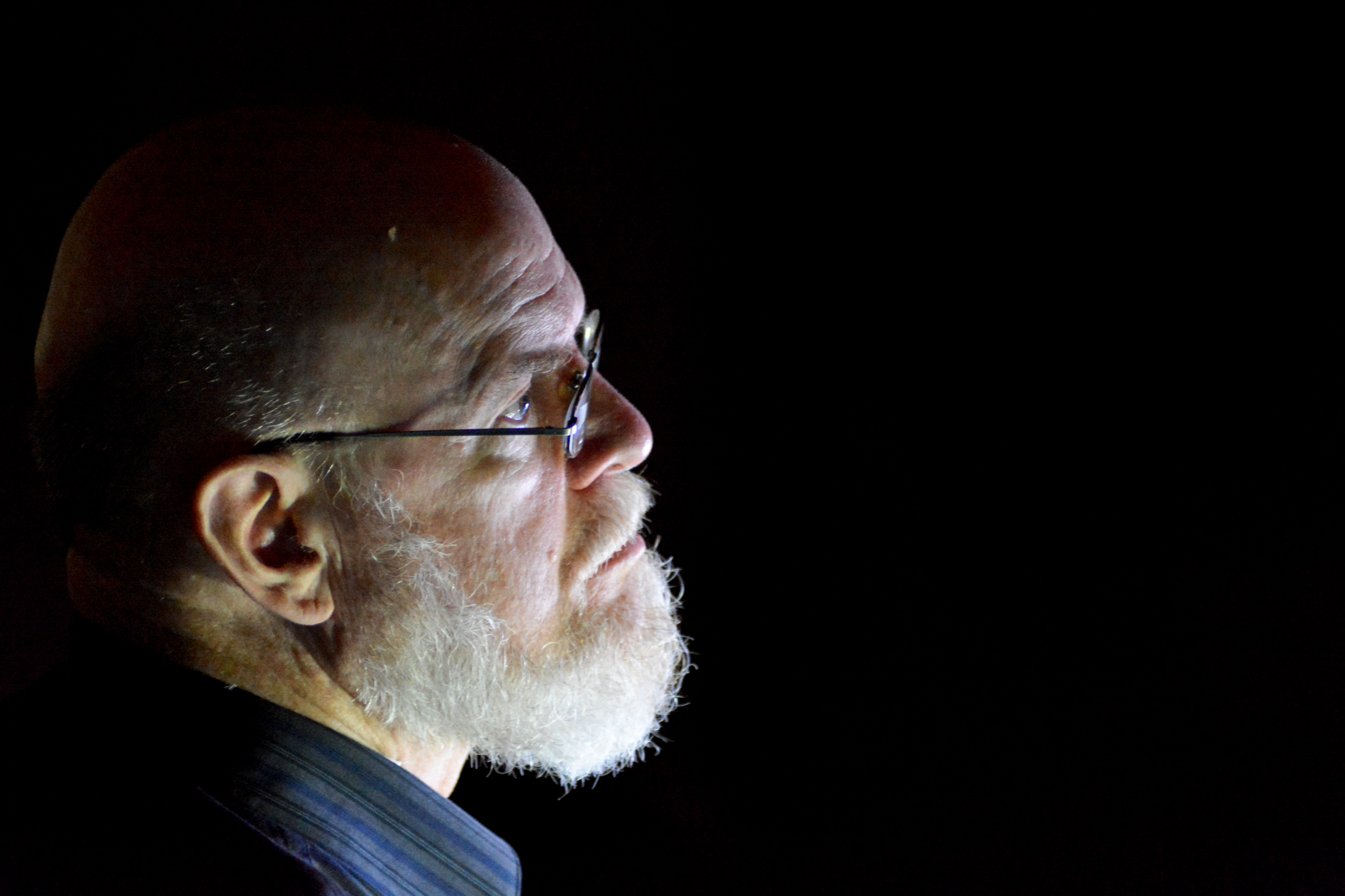Mention the town of Catskill these days, and people might tell you they’ve heard it’s the latest example of the sort of post-industrial urban revival that has been happening in and around the Capital Region over the past decade or so. New life has been breathed into places like Schenectady and Troy and, further out, Hudson to the south and Ballston Spa to the north. Outside of the tri-city area, much of this phenomenon can be understood in the context of proximity: Hudson is an easy train ride for New York City tourists on a budget; Ballston Spa is a more affordable alternative to Saratoga Springs. But Catskill? It’s sort of in the middle of nowhere.
Except that, as the crow flies, Catskill is exactly 101 miles outside of New York City limits — which made it a prime candidate to fulfill the vision of Lumberyard, a newly-opened not-for-profit performance space. The first organization of its kind in the area, its unique focus is on helping performing artists to put finishing touches on their work before making a big-city premiere. Adrienne Willis, Lumberyard executive and artistic director, explains that many major theatres require out-of-town locations used for this purpose to be a minimum of 100 miles away. Catskill fit the bill — and, as Willis adds, “It’s a town on the verge of revitalization.”
Catskill is the county seat for Greene County, a place that Willis describes as being “incredibly hungry for new development and economic growth.” As a result, she says, many of the traditional roadblocks that a lot of theatres run up against in the effort to get built simply didn’t exist. “They were partners with us,” she says. “We wanted to become part of the fabric of a new community as they were building.”
The whole concept of “building” is a central theme for Lumberyard, which traces its roots to an organization called the American Dance Institute (ADI) that operated a large-footprint space behind a strip mall in Rockville, Maryland. That location, just outside of Washington, D.C., proved effective for outside groups to hold test runs of their artistic pieces while building design and technology elements into their work: a week-long technical residency that is commonly referred to in the theatre world as a “tech week.” The luxury of a tech week, which often represents the costliest part of the creation process, can be inaccessible to artists working outside the context of a larger company, Willis explains. Yet the company model has ceased to be viable for many performing arts organizations.
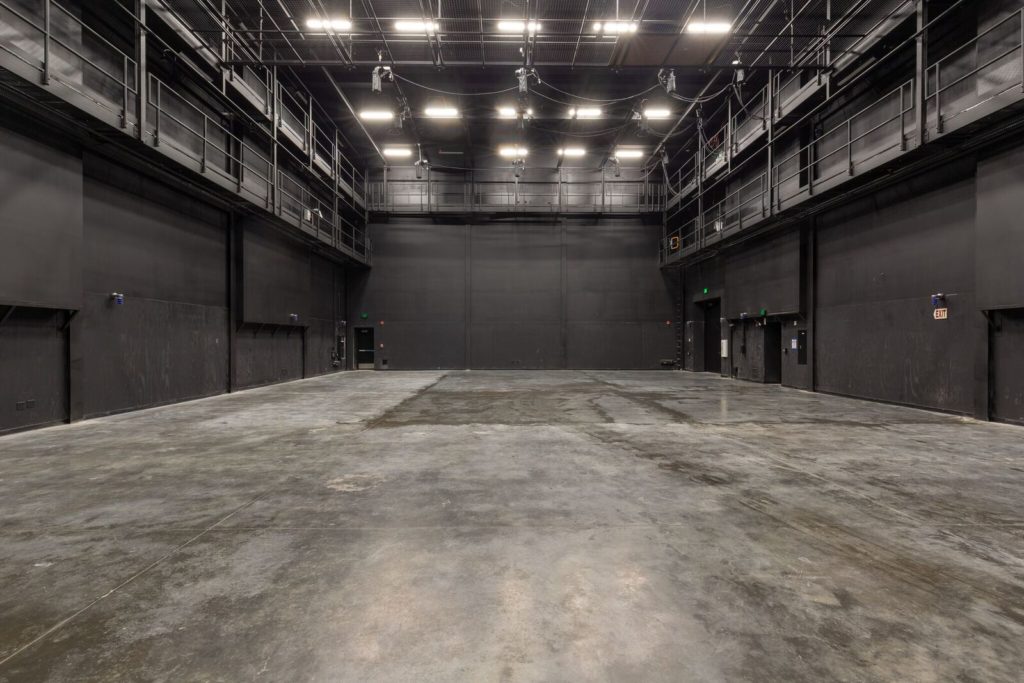
Inside The Lumberyard.
Artists are instead building their work in stages, over multiple residencies spanning a period of two to three years. “They piece it together,” Willis says. “They’ll go from an early-stage residency in, say, a cabin somewhere, and they’ll just work on the script. Then they’ll go to a mid-stage residency where they’ll try to get the whole company together two weeks at a time.” When they finally get to an end destination like the Brooklyn Academy of Music, they’re given all of 24 hours in the space to work in tech before their premiere. It’s hardly enough — especially when artists are creating boundary-pushing work with greater reliance on technology than ever before.
This is the need that Lumberyard seeks to fill: giving artists the space and the time they need to incorporate into their work the technical elements that are integral to their vision. Or, as the organization’s mission statement succinctly sums up, “Helping artists make the work they imagine.”
Going from renting an expensive, tucked-away space in Rockville to owning a multi-purpose, highly-visible space in Catskill was fueled by the bequest of arts patron Solange MacArthur, who had originally hired Willis in 2010 to take the dance institute’s school in a new direction. MacArthur’s untimely death in 2012 left the organization with resources to continue to build upon that vision. “We knew that we had an opportunity,” Willis says. “It was seed money to build something that had national significance.”
Given the expanded breadth of its performing arts focus, it was clear that a new name was needed for ADI. Deciding upon “Lumberyard” came directly from the search for a new space. While a theatre for sale in Hudson was being considered, a realtor suggested taking a look at another type of facility altogether: an actual, working lumberyard. Run for many years by Dunn Builders Supply, the business was in operation as a lumberyard from the late 1800s until the day the organization purchased it.
“It just seemed like the perfect place for us,” Willis says. Already the space included a large area, once the home for a hardware store, that was not marred by columns which could interfere with theatrical sight lines. Already a taxi driver would know what was meant if someone arriving by train in Hudson asked to be taken to the Catskill lumberyard. And because the Dunn lumberyard had driven the economy for so long — before the big-box franchises like Home Depot and Lowe’s came in — the name seemed like an ideal way to both recognize the space’s past and reflect the mission of giving people the tools they needed to build new work.
The space itself is where the value of Lumberyard’s contribution to the artistic process becomes most readily evident. The property is highly configurable, offering more than 7,000 square feet of production space in its main building, and more than 5,000 square feet of additional space in the rustic secondary studio across the street. It can be transformed to replicate a variety of New York City stages. There is also housing for up to 25 artists, with bedrooms that can easily be repurposed as storage space, office space or multimedia editing bays. Parking is available for numerous production vehicles, and waterfront access even allows the space to accommodate docking of large boats. The organization has also purchased all the waterfront property across from its main building, with the intent to hold onto it as an investment for future use, or sale, down the road.
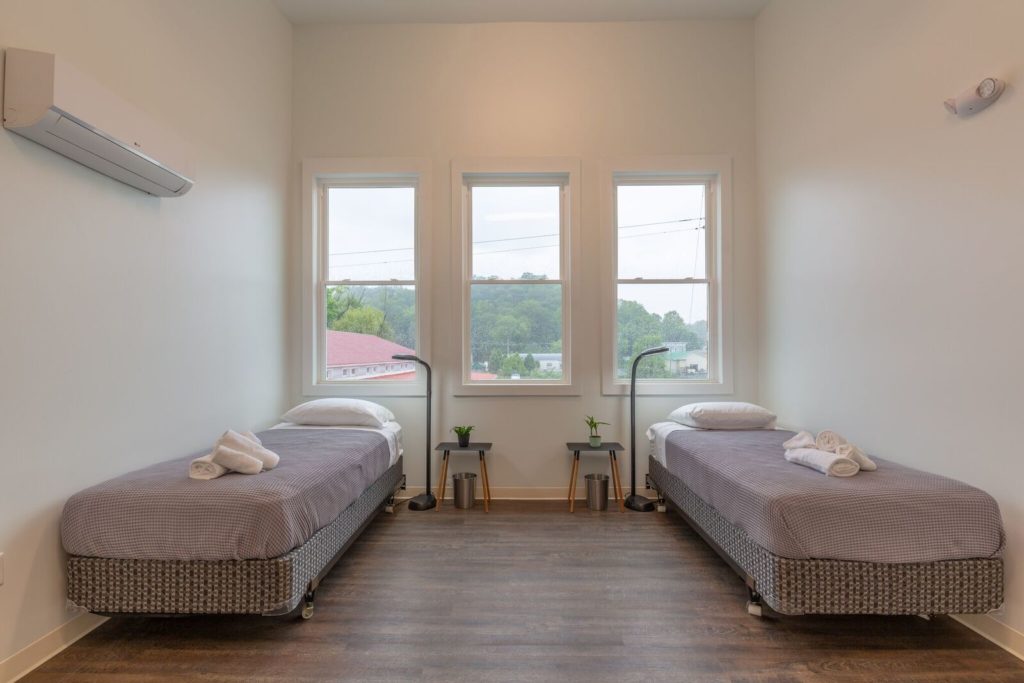
Artist housing at The Lumberyard.
Although providing space for the performing arts represents Lumberyard’s core mission, the chameleon-like space is designed to be utilized in other ways as well. One way is functioning as a production facility for film and television production. Lumberyard contains the area’s only purpose-built soundstage, meaning that it hosts amenities such as a reinforced floor and silent air conditioning and heating. The intention is to use film and TV production as a revenue stream, but the Catskill location will make it much more affordable than a studio in the city, Willis says. Production studios utilizing the space also may qualify for a 40 percent tax break through New York’s Film Tax Credit Program.
“There’s a lot of filming in the Hudson Valley right now,” Willis observes. “It’ll be great if people can park (at Lumberyard) to do some of their interiors, while they’re doing exterior shots of all the lakes and mountains and main streets and everything else that they can get in the Hudson Valley.”
Another potential revenue stream is rental of the space for weddings and events; a climate-controlled space that can seat 400 people for dinner has been noticeably absent in the Hudson Valley outside of the Capital Region. Until now, that is.
Willis notes that the mission of the organization has evolved, incorporating a deeper understanding of the challenges in getting one’s voice heard in a small town, as well as the importance of making an impact on the surrounding community. That includes active outreach to the next generation of artists. Lumberyard is currently running three programs aimed at local youth: a free, after-school workshop program in Catskill middle schools; a program offering technical theatrical training and paid employment to high school students through the Columbia-Greene Development Initiative; and the Fresh Start program, which teaches re-integration and conflict resolution techniques to incarcerated youth through theatre.
Lumberyard appears to be firing on all cylinders as it officially moves into action. Its opening ceremony, held on Sept. 1, was hosted by actor Alan Cumming and featured a performance by tap dancer Savion Glover. A recent economic impact study projected that the facility could annually create a $13 million output and support the creation of up to 150 jobs, along with welcoming up to 10,000 additional visitors to the Hudson Valley region. That’s in addition to the direct spending coming from the organization’s own operational budget of roughly $7 million. Most significantly, all of Lumberyard’s revenue is invested back into the performing arts. Currently, Willis is searching for a donor or corporate sponsor that can offset costs and allow affordable rental rates of the theatre to community groups. “I think that it could be a perfect community space,” she adds.
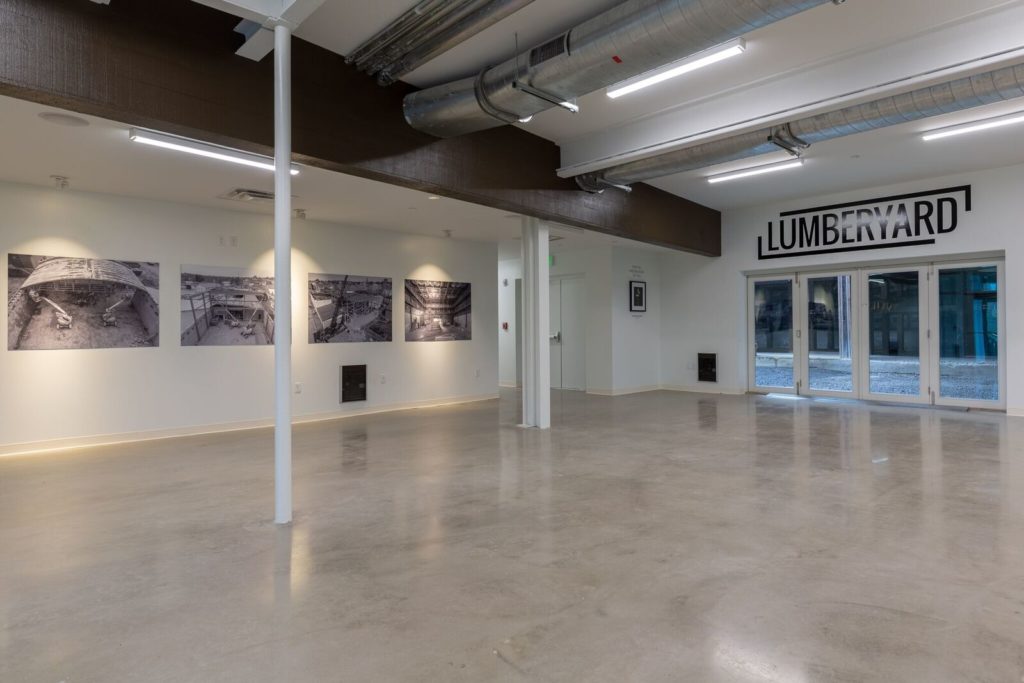
Community engagement is also evident in the organization’s marketing strategy, which Willis says is more genuine because it is executed fully in-house. To cap off the long build-up to the opening of the space, a large sign was placed facing the street; it simply read: “Finally.” This has since been replaced with a clever new message designed to grab attention and drive new traffic to the space. It reads, “We built it. Now come.”

